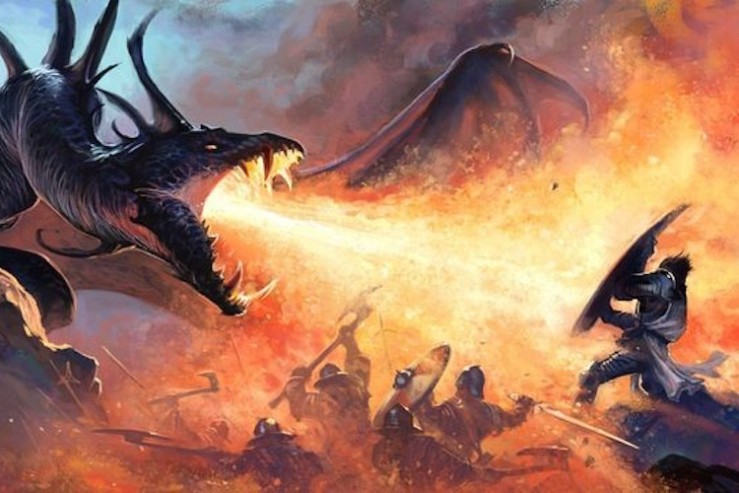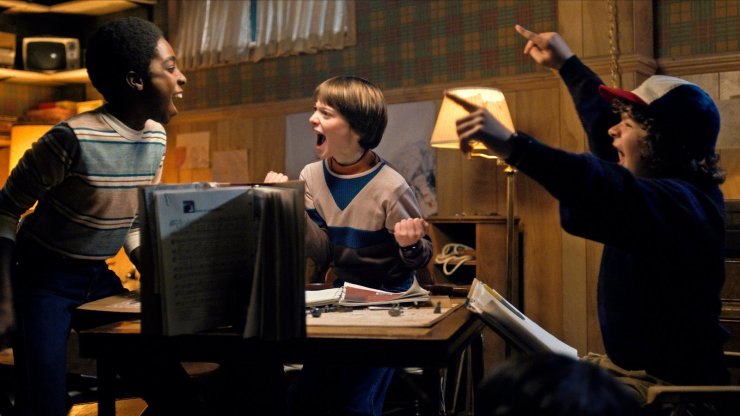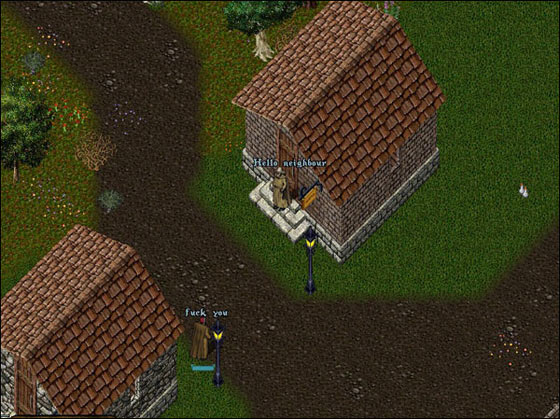“A lot of them [fiction writers] develop their individual characters in detail, and they say what is their problem in the beginning, and what they are going to grow to learn in the end. That’s not the method I’ve used… I have the world. I have the message. And then the characters are there to support the world and the message.” – Richard Garriott (Quoted in Joystic Nation by J.C. HERTZ; Cited by Manovich, 1998)
Games and New Narratives
With the development of computer technologies, computer games are becoming an important tool in the new media for both the leisure industry and the entertainment industry. With the expansion of 3-D technology in the early 1990s, computer games have improved as a new form of art by using both traditional narrative methods and the innovative narrative method of cinema. Although the seventh art cinema is a revolutionary communication method, according to Lev Manovich, it remains unidirectional; the “users” of cinema can understand the cinematic language but can not “speak” (for example, making a movie), however all computer users can speak the language of the computer interface and may actively use it. (Manovich, The Language of New Media, 2001)
In this context, computer games offer a new aesthetic approach and a new way of communication through the navigable area and interactivity. In the face of the passive narrative of cinema and literature, the computer players are active due to the narrative based on navigable space. In various games, the player’s avatar moves literally step by step on the virtual world. Even if the game has only one scenario, the gameplay is shaped by the player’s choices. In addition, according to Lev Manovich, while the narratives of modern literature and modern cinema are based on the psychological tensions of the characters, these computer games revive the oldest narrative forms based on the main protagonist’s spatial movements, in which the character travelling to the distant lands, to rescue the princess, to find the treasure or slay the dragons etc. (Manovich, Navigable Space, 1998)

According to Denis Dyack computer games should be considered as eight art form due to interactivity of the gameplay. (Dyack, 2010) Denis Dyack highlights that the video games with the gameplay merges previous art forms just like cinema. (Dyack, 2010) According to Warren Spector, in narrative of a book or movie the hero’s choices have already made by the writer or scriptwriter. But in narrative of games, the choices have to be left to the player. Players should determine which is better and ethical option, in example, to kill terrorists or finding another way to rescue the hostages. (Spector, 2016) This new narrative of computer games, by its very nature, provides identification of the user with his/her character more powerful than other art forms (esp. cinema). Tadhg Kelly underlines that, when a social issue is processed in a computer game, the player reacts more responsibly than reading in a book. (Kelly, 2016). Because players are experiencing those kind of issues by themselves during gameplay. According to Richard Garriot, games are “…more powerful than books, and more powerful than movies in taking a message to people and not just informing them about that, not just persuading them through being told, but also letting people explore their own beliefs, explore the facets of those issues, in a way that ultimately should be far more convincing.” (Garriott, Most Powerful Medium, 2010). Hideo Kojima also states that he designed his games by using the power to create awareness and ensure that players use them in their daily lives (Kojima, 2015) According to Hideo Kojima, his games do not telling stories, the players are acting as a certain character in the story and enviroment of game. Therefore, when designing his games he also aims to make the player feel like his character feels. In this context, Kojima is aiming to make his games not only for amusement, but also for the players to think about the subjects (e.g. consequences of a nuclear warfare). (Kojima, Story vs Interactivity, 2010)
Massive Multiplayer Online Role Playing Games
A Massive Multiplayer Online Role Playing Game (MMORPG) is a networked game which enables thousands of players to simultaneously interact in an online gameplay environment (Dickey, 2006). The roots of MMORPGs can be found in digital single-player role-playing games and table-top games such as Dungeons and Dragons. Among the first of the online digital games were Multi-User Dungeons or Domains (MUDs) which are text-based games played on a computer network. Like table-top games and single-player computer games, MMORPGs are a game genre in which players adopt a character role and play the game as that character. (Dickey, 2006)

Within the MMORPG genre, players begin by creating a character they will play. Typically players are presented with a variety of base-characters from which to select. Players customize their character by choosing from a limited number of traits, skills, adornments and attributes. These limits force players to make decisions about the types of characteristics in which to endow their characters. The individual combination of attributes, adornments, skills, and traits are what make each character unique. Throughout gameplay, players continually enhance their character’s skills and attributes by participating in the narrative environment (Dickey, 2006).
In various computer and video genres such as single player role-playing games and adventure games, the game centers around the narrative of a single storyline which is usually linear in nature. In adventure games and single player role-playing games, the focus of gameplay is on uncovering the narrative storyline during the advent of gameplay. In both of these genres the storyline stops when the player stops playing and resumes when the player begins again. In contrast, MMORPGs are networked, persistant, communal environments. Because they are multi-player, networked environments, gameplay continues even when a player logs off. Within the MMORPG genre, there is no onesingle storyline for players to uncover, but rather the gameplay experience is an environment. Embedded within the environment are thousands of short narrative storylines. These short narratives are usually embedded in the environment in the form of a non-player character posing a short narrative tale in which they request the aid or assistance of the player’s character. (Dickey, 2006)
Dickey also states that the most important difference of an mmorpg is its open ended environment. Mmorpgs do not have ultimate endings and there is not one way for winning/playing the game. Due to its flexible nature, it allowing players to make choices, collaborating with others, challenging and getting achievements. (Dickey, 2006) Players are feeling sense of taking the role during developing their characters. And their interactions with other players such as assistances or betrayals are becomes the parts of the ongoing narrative of game. In order to develop their characters, players may spend weeks or months and this situation results players to feel emolitional proximity to their characters. Their character becomes their avatar in the enviroment of game. As a result these alternative identities or roles become a form of virtual social status. (Jakobsson, 2002; Cited by Dickey, 2006) Many players report that the emotions they feel while playing an MMORPG are very strong (Yee, 2006; Cited by Wikipedia, 2018) and enjoyment of a game is directly related to the social organization of a game, ranging from brief encounters between players to highly organized play in structured groups (Nardi, 2006; Cited by Wikipedia, 2018).
The majority of popular MMORPGs are based on traditional fantasy themes, often occurring in an in-game universe comparable to that of Dungeons & Dragons. Some employ hybrid themes that either merge or replace fantasy elements with those of science fiction, sword and sorcery, or crime fiction. Still, others draw thematic material from American comic books, the occult, and other genres. Often, these elements are developed using similar tasks and scenarios involving quests, monsters, and loot. (Wikipedia, 2018) In addition many elements from various mythologies are used in design and development.
Both terms of “avatar” and “mmorpg” are coined by game designer Richard Garriot. In literature, the Word “avatar” is originated in Hinduism, and in new media it is used for defining graphical representation of users or user’s alter ego or character. It can be an icon in online communities like internet forums or it can be three dimensional representation in virtual worlds (i.e. gameplay characters). Richard Garriott describes the term of avatar as rather player himself/herself than the alter ego. Therefore he aims to challenge the players’ moral codes and ethical dilemmas in his games in order to send his messages. (Garriott, 2010)
Conclusion
In the era of new media, computer games are becoming increasingly popular and gaining importance as a new means of communication. With the development of 3d technologies in the 1990s, computer games have become the eighth art by combining both traditional storytelling techniques and the innovative technique of cinema. Thanks to their interaction, computer games are much more effective in transmitting the message than in a book or film. Because the user personally experiencing the issues during gameplay and unlike other arts they are shaping the story themselves by making choices according to their own rules of ethics.
The increasingly popular multiplayer online role-playing games take the storytelling of the eighth art to the next level and enable the players to create emotional ties with their avatars. The mmorpg players are aiming not only to have fun in the game but also to achieve a social status. In this context, mmorpg players are identified with their characters in the game and plays themselves as well as their alter egos. In the further researchs, these motivations of the players will be examined in the context of new media.

References
(2018, 11). Wikipedia: https://en.wikipedia.org/wiki/Massively_multiplayer_online_role-playing_game adresinden alınmıştır
Dickey, M. D. (2006). Game design and learning: a conjectural analysis of how massively multiple online role-playing games (MMORPGs) foster intrinsic motivation. Education Tech Research Dev, 253-273.
Dyack, D. (2010). Eight Art Form. (Critical Path Project, Interviewer)
Garriott, R. (2010). Coining Term “Avatar”. (Critical Path Project, Interviewer)
Garriott, R. (2010). Most Powerful Medium. (Critical Path Project, Interviewer)
HERTZ, J. (tarih yok). Joystic Nation. 155-156.
Kelly, T. (2016). Points of View. (Critical Path Project, Interviewer)
Kojima, H. (2010). Story vs Interactivity. (Critical Path Project, Interviewer)
Kojima, H. (2015). Point of View. (Critical Path Project, Interviewer)
Manovich, L. (1998). Navigable Space.
Manovich, L. (2001). The Language of New Media.
Nardi, H. (2006). Strangers and Friends: Collaborative Play in World of Warcraft, Proceedings of the 2006 20th anniversary conference on Computer supported cooperative work.
Spector, W. (2016). Choice and Consequence. (Critical Path Project, Interviewer)
Yee, N. (2006). An Ethnography of MMORPG Weddings.